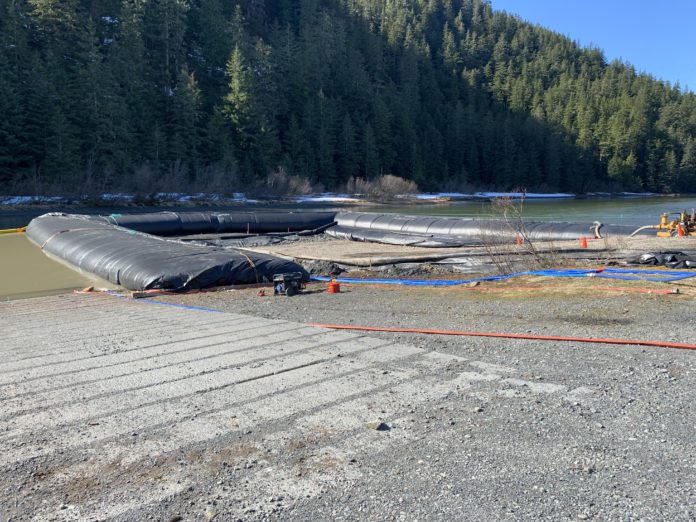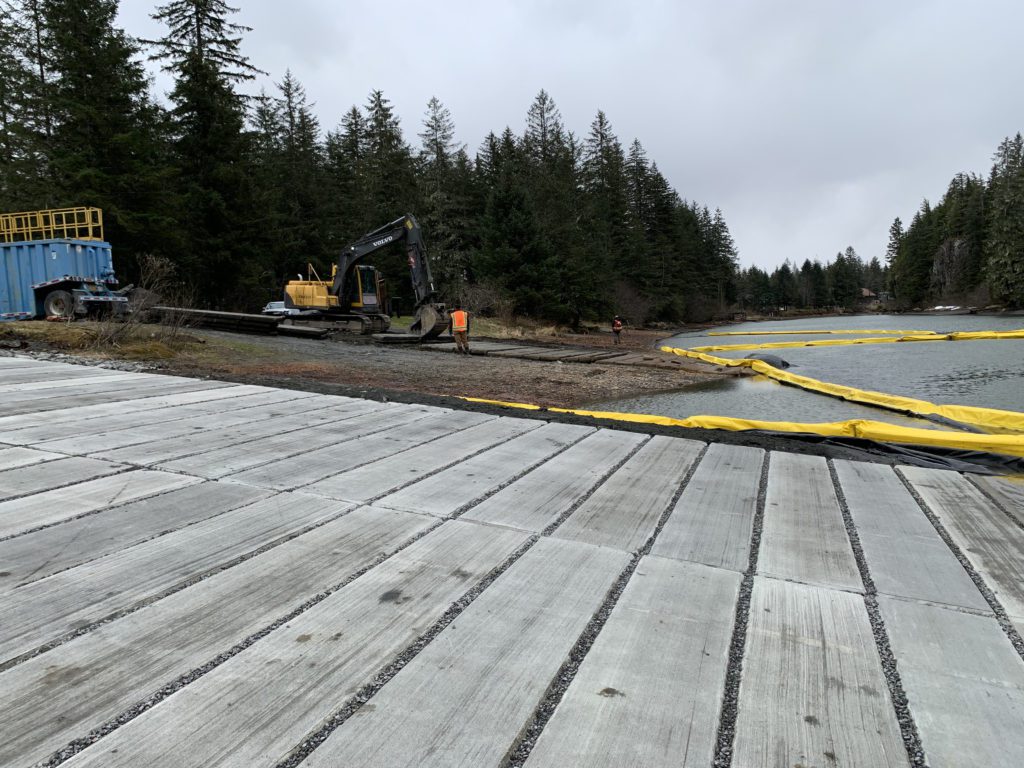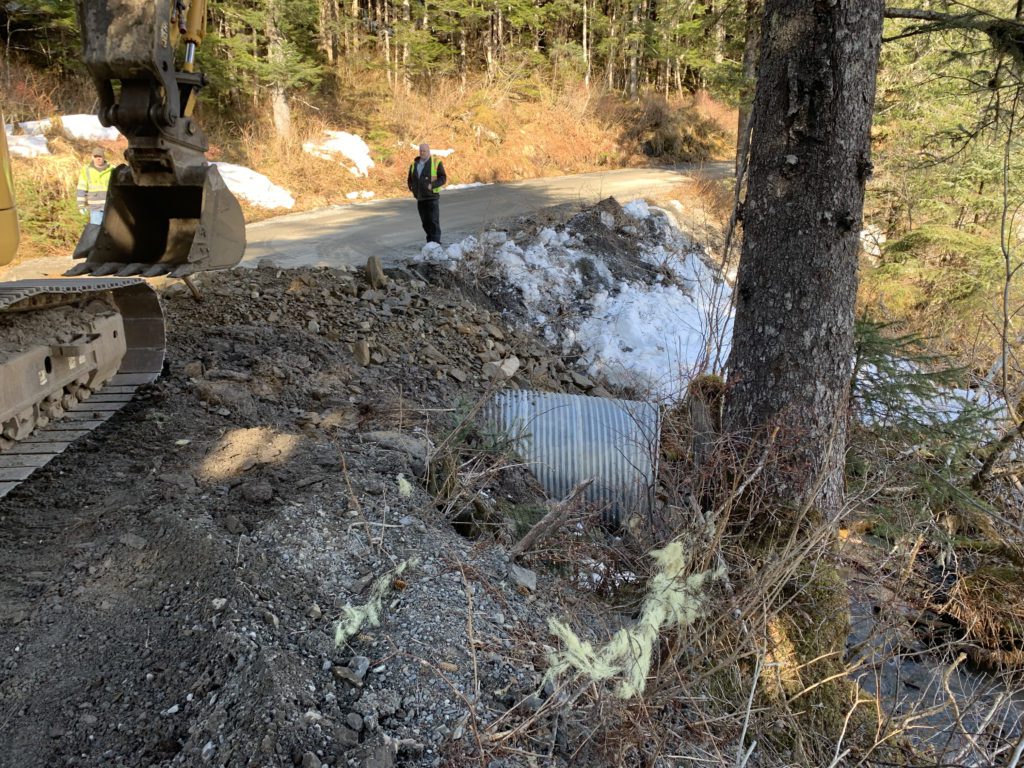
Spring is in the air, with contractors for the U.S. Forest Service and a crew from the Alaska Department of Transportation are taking advantage of unusually dry weather to push ahead on projects near Eyak Lake.
Just beyond the Eyak River bridge, work on major improvements to the USFS Eyak River Boating Site is well underway.
One of the first steps was to install a large inflatable boom system to dry out the area designated for a new ramp, which will be twice as wide as the older one.
Concrete slabs of the original ramp had been shifted out of position by freezing and erosion and launching river boats there was almost as challenging as running the river, which has gradually silted in to create major issues for even jet boats.

Work on the in-river part of the project is on schedule. The goal is to finish that phase prior to the arrival of sockeye salmon headed for spawning grounds in Eyak Lake.
On April 22, the new ramp was complete, and an excavator methodically removed the old ramp slabs one at a time. The large bladder boom system had been removed as part of the process.
More improvements to the landing will soon follow, including expansion of the parking area and reconfiguring the access roads to facilitate traffic flow through the landing.
Meanwhile, across Eyak Lake, five miles out Power Creek Road, a DOT crew was pulling out one of the oldest remaining culverts on that historic road, which dates back to the early 1900s.
As the name implies, the 7-mile dirt road was originally pioneered in the search for hydro-electric power for Cordova, and also served as a logging road. Its history includes a hatchery at mile 6 which eventually failed, with the buildings at one time becoming the site of a children’s home.

One of the few roads out of Cordova during the railroad days, it was also home to a famous American Legion Cabin just across Power Creek at 6.5 miles.
The term “culvert” for what the DOT removed is generous. In fact, it was a wooden “crib” structure that had continued to erode over the years, creating a narrow hazard at a sharp curve in the road.
“I don’t know when it was built,” said Rob Mattson, manager of the DOT station near the Mile 13 Airport, “but I know it had to be the only wooden culvert structure left in Cordova.”
“We have been looking at replacing it for several years, but have been so short of crew that we just couldn’t get to it. A lot of people don’t realize we have been short three equipment operators for quite some time.”
The large new metal culvert will allow expansion of the curve in the road, which is well known for its winding path and changes in elevation.
“It’s a very popular road,” Mattson said, “and I’m glad we finally were able to repair that spot.”
With spring in the air, motorists and boaters will be equally happy with the completion of both of these projects.





